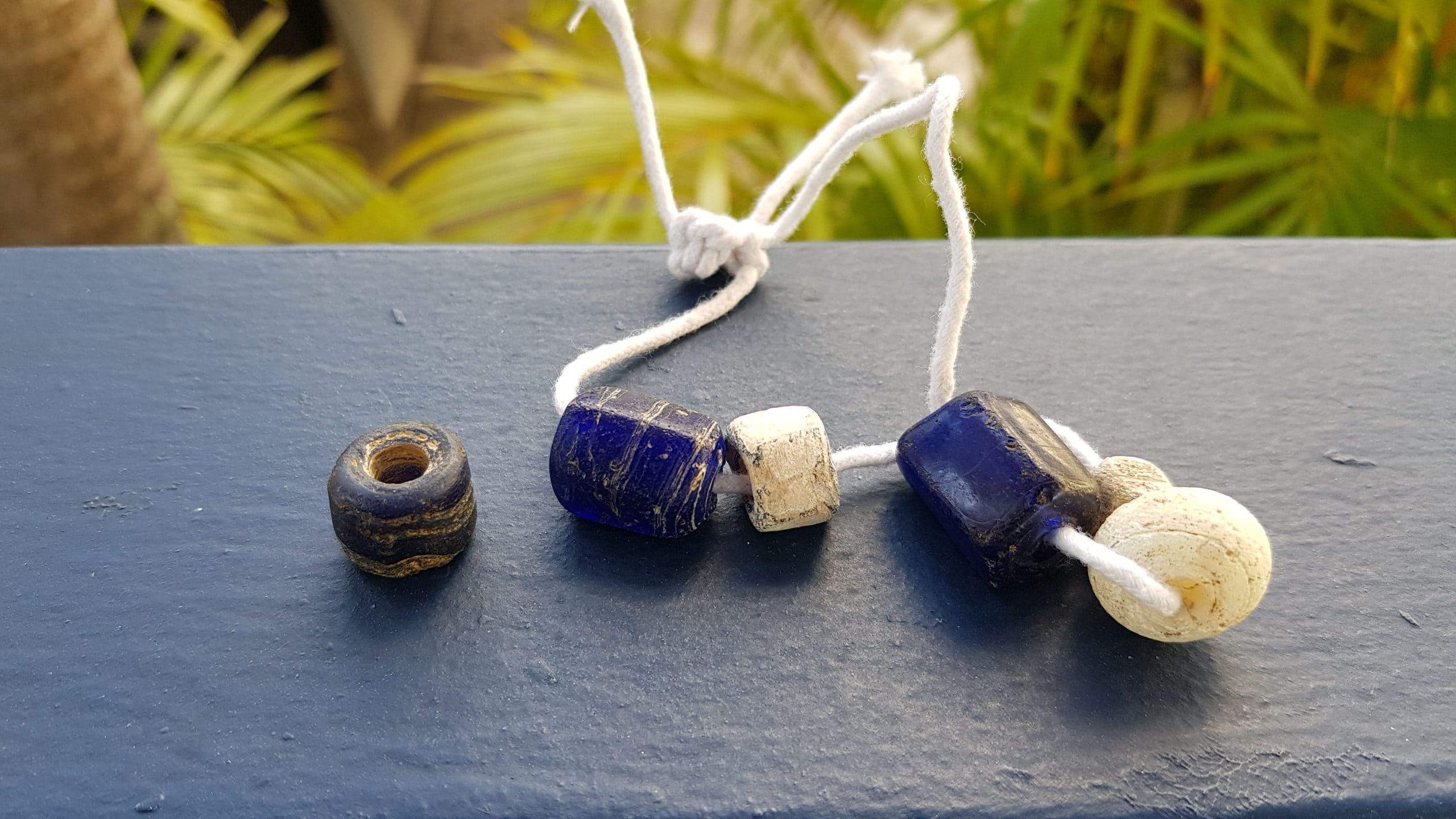

Source | Waste from the glass factory and remains of beads in various stages of production found on the Keizersgracht
https://goo.gl/maps/526cKUsjbvAgpFeB8
During archaeological excavations in the backyard of a house on the Kloveniersburgwal glass beads were found amongst the remains of a glass factory. Two late 16th-century bead manufacturing sites were also found at the west end of the Keizersgracht. At the Rozengracht there once was a bead factory too, In the same street there is a bead store today.
Glass beads were used to trade with native inhabitants of the colonies. The African people used these beads to show wealth and for their believed healing powers. These trading beads are also known as slave beads, as they were often used to buy enslaved people.
Dutch glass beads, produced since the late 16th century were mainly used for trade in North America, Africa, the Antilles and Indonesia.

Source | Glass beads used by the Maasai tribe, Kenya

Source | Statia blue beads, Sint Eustatius. These beads were produced in the Netherlands, and were used to buy slaves. They were also used as a currency among enslaved people themselves.
On the Caribbean the WIC used blue beads to trade on the island sint Eustatius. They were not only used to buy the enslaved, but the enslaved also received them as a reward for their work and wore them as jewelry. After the abolition of slavery these beads were suddenly useless. Massive amounts of beads were left forgotten in basements. To celebrate their freedom, the enslaved threw their beads in the ocean. Nowadays scuba-diving tourists often find these beads. They are the only objects that are allowed to leave the island. ℹ️
In some cultures the glass beads are still worn, but are not associated with slavery anymore. In Surinam, a former colony of the Netherlands, there is still a tradition of wearing glass beads. In Creole-Surinamese culture the ogri ai (evil eye) is a black faceted bead made from glass, which according to superstitions should protect the wearer from evil spirits ℹ️. Babies and young children are said to be the most vulnerable to evil spirits, but most people wear their bead on a necklace through adulthood. Even though most of my Surinamese family is not of Creole, but of South-East Asian descent, my family wears the ogri ai beads too. These are some of my own jewelry pieces given to me by my family at birth (which is the tradition for most Surinamese families). My father and my brother and I have worn beads like these since we were babies.

Name pin with two ogri ai beads I received at birth, usually worn by young children only.

My brothers ogri ai on a chain.

Baby bracelet with glass beads and my ogri ai bead (which has toothmarks from when I wore it as a child 🤦🏽♀️).

My earrings with ogri ai beads
According to popular belief, the Dutch settlers bought Manhattanfrom the original inhabitats for $24 worth in beads. The only record of this purchase however, mentions the trading goods were worth about 60 guilders, which would be worth $1,143 in 2020 ℹ. Still an incredibly good deal.
[Trade beads](https://en.wikipedia.org/wiki/Trade_beads#:~:text=Trade beads (sometimes called aggry,This included African slave trade.)